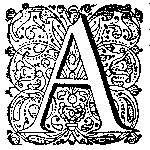The Linguistic Coping Strategies of Three Netherlanders in England
Jan van der Noot, Lucas d’Heere, and Johannes Radermacher
DOI:
https://doi.org/10.51750/emlc11333Keywords:
Jan van der Noot, Lucas d’Heere, Johannes Radermacher, migration, linguistic capitalAbstract
Thousands of migrants left the Low Countries in the second half of the sixteenth century for religious, political, or economic reasons. They faced many difficulties as they attempted to rebuild their lives abroad, including linguistic obstacles. Many of them moved to England, but proficiency in English was rare among the Netherlandish community. Nevertheless, as this article argues, the language differences did not only pose problems, they also offered opportunities, especially to members of the higher echelons of the Dutch diasporic community. The inhabitants of the Low Countries were widely reputed to have excellent knowledge of languages, and for good reason. This article concentrates on the linguistic strategies of three multilingual individuals who moved across the North Sea: the nobleman Jan van der Noot, the painter Lucas d’Heere, and the merchant Johannes Radermacher. It studies the ways in which they used their proficiency in multiple languages as starting capital to build new social and professional lives for themselves. For example, they used their linguistic skills to appeal to the local aristocracy in order to ensure patronage, to expand social and professional networks by frequenting particular religious language communities, and to offer language instruction. This article therefore contributes to our understanding of linguistic encounters in the everyday lives and struggles of migrants in the sixteenth century.
Downloads

Published
Issue
Section
License
Copyright (c) 2021 Alisa van de Haar

This work is licensed under a Creative Commons Attribution-NonCommercial 4.0 International License.





